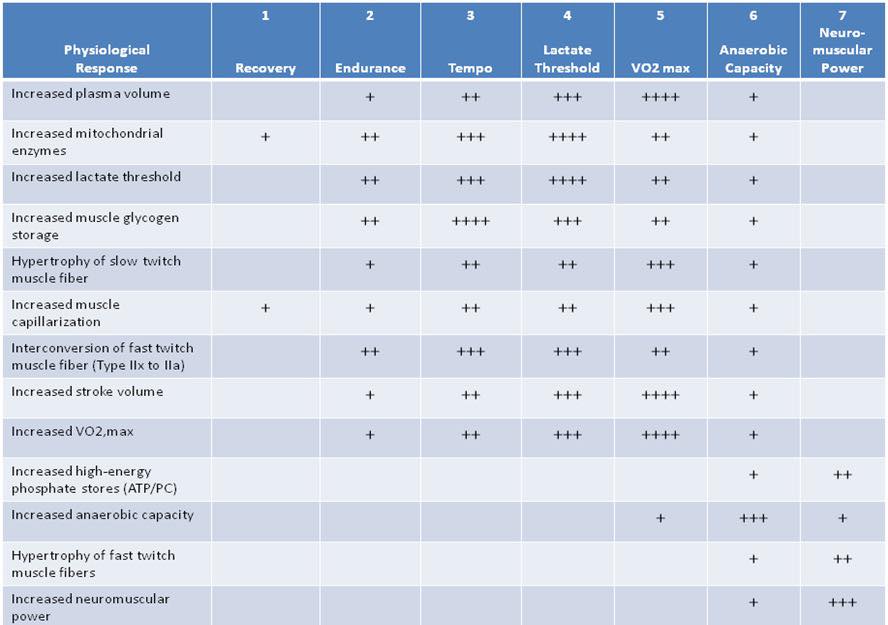What are the expected physiological adaptations for training in different zones?
What are the expected physiological adaptations for training in different zones?
The photo attached is the work of Dr Andy Coggan, the Author of Training and Racing with a Power Meter and founder of the smart training movement we see today.
The table outlines the expected physiological improvement for training completed in each of the 7 zones.
We can see from this chart that training above Vo2 max does little to improve our lactate threshold or improve glycogen storage; two of the major contributors to exercise performance.
Tempo and Threshold work deliver the biggest training adaptations and this is why they form the basis of a high performance training program.
AIRhub is the number 1 tool for generating more time in Tempo and Threshold zones and this is why it’s the choice of world class athletes. As used by Record breaking Ironmen and Athletes on 8 different World Tour cycling Teams, the AIRhub puts you into the most effective training zones at the press of a button.
The AIRhub resistance is specific to you and your training time. Most cyclist don’t have the time to ride their bike all day, that’s why smart training using the AIRhub always delivers quick results. A 40minute high resistance ride around the suburb is enough to activate all the physiological adaptations listed in the chart above. It’s possible to apply the maximal adaptation for the minimum training dose by training smart.
To read more about smart time effective training have a quick google for Andy Coggan’s work and be sure to read some of the www.AIRhub.com.au training blogs. The 2x 20minute training session and the “Sweet Spot” concept is just some of his work.
The photo attached is the work of Dr Andy Coggan, the Author of Training and Racing with a Power Meter and founder of the smart training movement we see today.
The table outlines the expected physiological improvement for training completed in each of the 7 zones.
We can see from this chart that training above Vo2 max does little to improve our lactate threshold or improve glycogen storage; two of the major contributors to exercise performance.
Tempo and Threshold work deliver the biggest training adaptations and this is why they form the basis of a high performance training program.
AIRhub is the number 1 tool for generating more time in Tempo and Threshold zones and this is why it’s the choice of world class athletes. As used by Record breaking Ironmen and Athletes on 8 different World Tour cycling Teams, the AIRhub puts you into the most effective training zones at the press of a button.
The AIRhub resistance is specific to you and your training time. Most cyclist don’t have the time to ride their bike all day, that’s why smart training using the AIRhub always delivers quick results. A 40minute high resistance ride around the suburb is enough to activate all the physiological adaptations listed in the chart above. It’s possible to apply the maximal adaptation for the minimum training dose by training smart.
To read more about smart time effective training have a quick google for Andy Coggan’s work and be sure to read some of the www.AIRhub.com.au training blogs. The 2x 20minute training session and the “Sweet Spot” concept is just some of his work.
